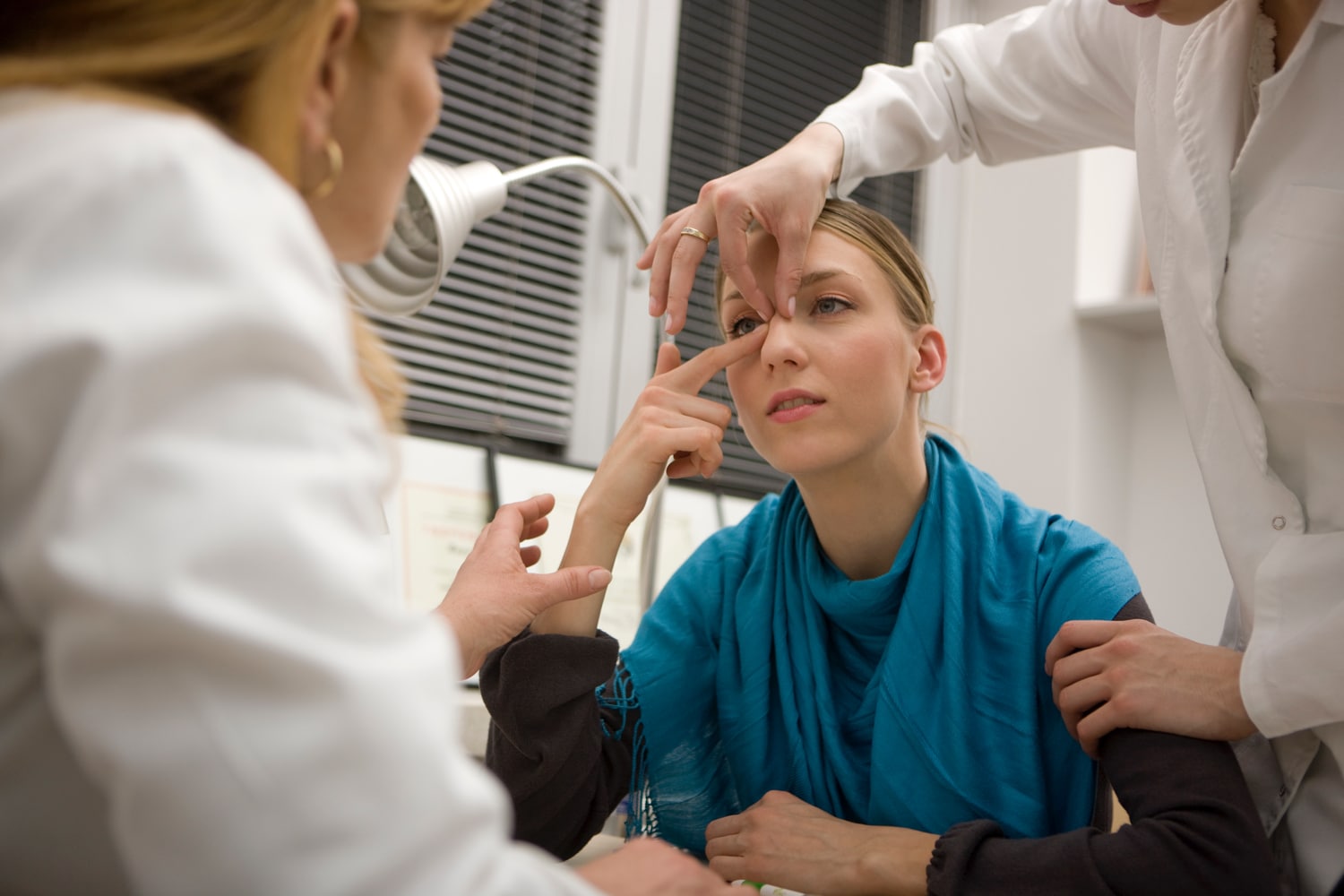Rhinoplasty is a surgical procedure to repair or reshape the nose. It can change the size, width and profile of your nose; smooth out depressions or bumps on the bridge; and fix an imperfect nasal tip (one that is too large, droopy or curves upward). Large or wide nostrils may be reshaped, and a deviated septum can be corrected.
What Are the Most Common Reasons for This Procedure?
- Breathing through the nose is difficult
- Traditional sleep apnea treatments are not effective
- Severely deviated septum requires correction
- Cosmetic reshaping of the nose
- Reconstruction after a nasal fracture or other trauma
Are There Any Risks?
Rhinoplasty is a common and safe procedure, but there are risks inherent with any surgery. These include infection, bleeding, pain, bruising, swelling, numbness, nasal asymmetry, skin contour irregularities and perforations in the nasal septum.
Can Medical and Cosmetic Rhinoplasty Procedures Be Performed at the Same Time?
Medical and cosmetic procedures are often combined so there is a single recovery period for the patient. Combining procedures may carry additional recovery risks, which you and your provide will discuss prior to scheduling.
Surgical Procedure

Surgery is performed using either a local or general anesthetic. The procedure typically takes between one to two hours but may last longer when more complex restructuring is required.
An incision is made – usually inside the nostrils – and the nose is either reduced or augmented using cartilage from other parts of the body. If a deviated septum needs to be corrected, it is straightened.
Once the nasal structure has been reshaped, the incisions are closed and the patient is given a splint and packing to help support the nose as it heals.
Rhinoplasty Recovery
Most patients return home the same day, though more complicated procedures may require a brief hospital stay. You’ll be asked to rest in bed immediately after the surgery, keeping your head elevated in order to reduce swelling and bleeding. Dressings usually come off after a week.
What Precautions Should You Take Post-Surgery?
- Avoid demanding aerobic activities.
- Avoid intense facial expressions including laughing and smiling.
- Do not shower while your nose remains bandaged.
- Do not pull clothing over your head while healing.
- Do not rest glasses on your nose for four weeks post-surgery.
- Do not blow your nose.
- Lightly brush your teeth, especially near the upper lip.
- Eat high-fiber food.
- Wear SPF 30 sunscreen on your nose when outside.
You may experience puffiness in the face and minor bruising for a few days while you heal. Rhinoplasty usually offers permanent results, though it may take up to a year for these to be fully noticeable.
What Results Can You Expect?
As with any surgery, results will vary. When it comes to nasal reconstruction, even a small difference of millimeters can have a drastic effect on the appearance of your nose. Working with your plastic surgeon to properly measure your expectations and the projected outcome can impact your satisfaction with the results of the procedure.
Call Glacier Ear, Nose and Throat at (406) 752-8330 or Glacier Hearing Services (406) 752-1014 for more information or to schedule an appointment